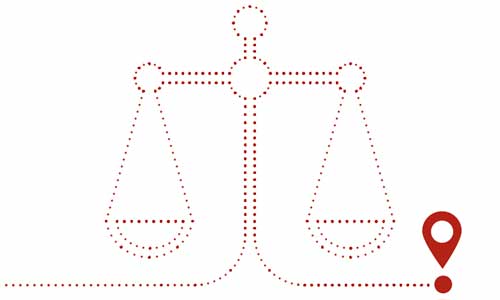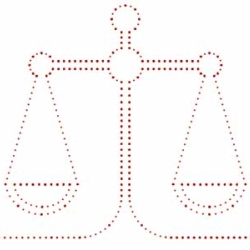Centering Our System Around Clear Paths to Justice
 In the fall of 2021, IAALS launched a virtual summit series, Paths to Justice, to underscore not only the challenges of the moment but also the substantial opportunities for systemic change. The series was comprised of multiple invite-only virtual convenings as well as a series of webinars focusing on the paths of the pandemic, the paths to access, and the paths to racial justice that our system must walk in our new normal. We connected with other stakeholders tackling these issues and fostered conversations among stakeholders and across systems, all with the goal of moving the conversation—and innovation—forward. We also published a series of white papers that corresponded to these key conversations.
In the fall of 2021, IAALS launched a virtual summit series, Paths to Justice, to underscore not only the challenges of the moment but also the substantial opportunities for systemic change. The series was comprised of multiple invite-only virtual convenings as well as a series of webinars focusing on the paths of the pandemic, the paths to access, and the paths to racial justice that our system must walk in our new normal. We connected with other stakeholders tackling these issues and fostered conversations among stakeholders and across systems, all with the goal of moving the conversation—and innovation—forward. We also published a series of white papers that corresponded to these key conversations.
Fast forward to 2024. The last few years have illustrated that our justice system is able to innovate when forced to do so. Our justice system remains under pressure from the economy, technology, and other forces, and we remain in a moment of opportunity to redefine what normal can look like for the delivery of legal services and the delivery of justice in our country. This is true for our courts, law firms, legal aid, community partners, and all those who touch our system. As Richard Susskind reminds us, “Remember too that the current system is not an evidence-based option that we have consciously chosen. It is simply where we are. We can choose to be elsewhere.”
Given the continued relevance of the Summit issue papers, and the need to continue to engage in this dialogue and push the conversation further, we have gathered the papers together in a single report with clear themes across the Summit of what is needed to make significant progress on this path to justice. These key themes are highlighted below, and discussed in further detail in the new report, Paths to Justice: The Bold Steps We Need to Reform Civil Justice.
A People-Centered Approach
Courts have been forced to think differently about where and how justice is delivered, and that has created an opportunity to consider meeting litigants’ needs in different ways. This is a lesson that should be driven home across our justice system—this system and all its actors exist to ensure justice for the people. We need to put people at the center of this work.
Redesign the System
As we focus on solutions, one lesson learned is that we need to make it easier for people to participate in the system. We need to remove complexity and simplify processes. We also need to realign the framework for resolving legal problems and facilitate the resolution of life problems.
A Web of Scalable Solutions
A key opportunity for impact lies in focusing reform efforts rather than treating access to justice as a one-size-fits-all problem. One way to do this is to focus on specific cases, such as family or debt collection, to understand their unique challenges and opportunities for improvement. Another way to approach system reform is to focus on different justice system actors. There are many different paths into the justice system, with a web of different people working within and around the system. We need to map out this ecosystem and create an integrated and cohesive approach to justice delivery. What we need is a web of solutions, preferably upstream, and always scalable.
Embrace Technology
At the heart of the lessons learned in recent years is the critical importance of technology. From remote proceedings to artificial intelligence, we continue to be faced with technological challenges and opportunities today. Recent experiences have underscored the digital divide, emphasizing that not everyone can access and use technology in the same way. Yet the challenges of technology are solvable, and there is great promise in its ability to bridge the access to justice gap.
Commitment to Diversity, Equity, and Inclusion
There remains a lack of diversity in the profession across the bench, the bar, and the academy—and there are signs that efforts in support of diversity may be backsliding. Yet diversification of the legal profession is critical to dismantling barriers to equity and ensuring a justice system that works for all people. To fully realize our goals of justice for all, we need to commit to diversity, equity, and inclusion along the entire continuum of our justice system.
Research
A key piece of system improvement must be a commitment to further research and collecting and disseminating documented successes and areas for continued refinement. Courts and other legal institutions need to collect, analyze, and understand data. This includes both quantitative and qualitative data—objective data provides critical insights, but so do the lived experiences of people who have interacted with the justice system. Such data would provide an evidentiary basis for making decisions about what is most in need of change and where to allocate precious resources.
Education
Over the course of our discussions, and across all the convenings, the necessity of education came up again and again. Education—on everything outlined in this section—is essential and should broadly engage both those within the justice system and those outside the system.
Expanded Partnerships, Engagement, and Support
No one entity can solve these monumental challenges alone. Partnership is critical to developing solutions and putting them in place. In addition, given the broad extent of the crisis and its impact on society, this crisis has not—and will not—be addressed through the usual actions, policies, or approaches. We need to expand engagement and support to include new and different stakeholders, and we need to look to other complex change movements to see what has been successful in getting engagement and broad support.
We urge that these themes remain guideposts in this work to improve our justice system. The convenings emphasized that the nature of the challenges our justice system faces—and their implications for public trust in confidence—is multifaceted. The civil justice system does not exist in a vacuum. It is one component of our broader court, governmental, and societal structures. To improve our civil justice system, we must understand how it is one among many interrelated systems, and we must take measures for change both within and outside the realm of civil justice. We also must deal with the reality that meaningful, lasting change will not be instantaneous. But we must stay the course and develop strategies for continued progress.



